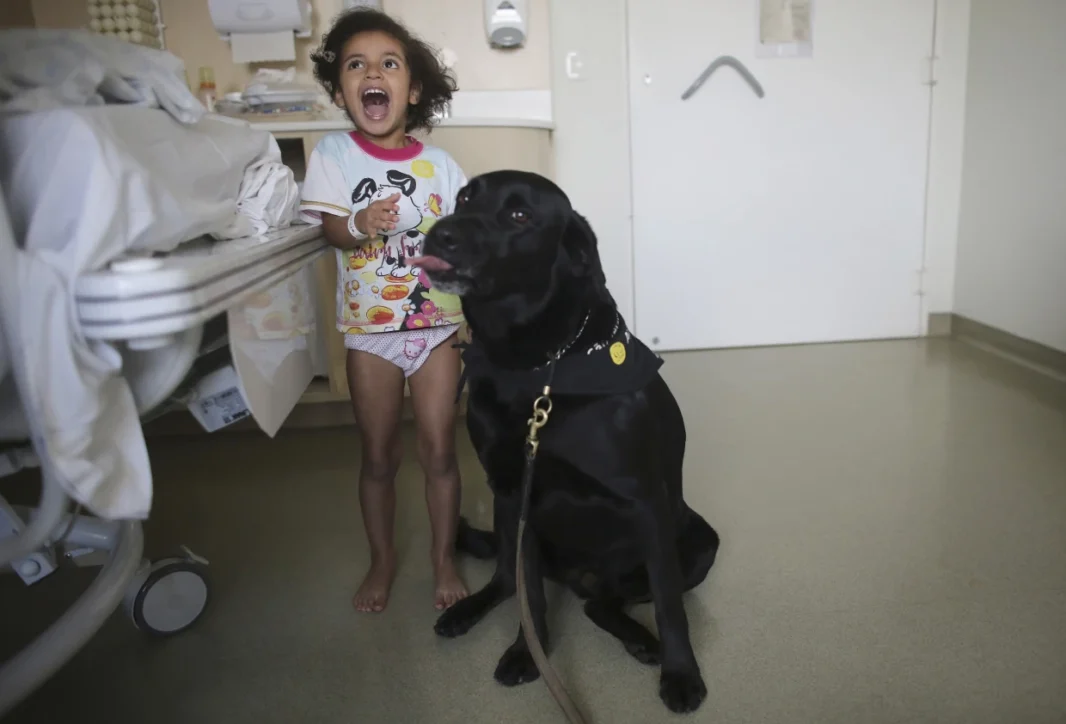Therapy Dogs: How to Choose the Right Breed and Temperament
Therapy dogs are specially trained to provide comfort, support, and emotional stability to people who are going through difficult times. These dogs can help ease stress and anxiety, lift moods, and promote healing. If you’re considering getting a therapy dog, it’s important to choose a breed and temperament that are well-suited to the job. Here are some factors to consider:

Breed
When choosing a therapy dog, the breed is an important factor to consider. Different breeds of dogs have different physical characteristics and personalities that can make them more or less suited to being therapy dogs. You can also find a lot of these dogs at Teddy Bear Dog Breeder.
Here are some breeds that are often used as therapy dogs:
Golden Retriever
Golden Retrievers are one of the most popular breeds for therapy work. They are friendly, outgoing, and eager to please. They also have a calm and gentle nature, making them well-suited to working in hospitals and nursing homes. Golden Retrievers are also highly trainable, which makes them a great choice for therapy work.
Labrador Retriever
Like Golden Retrievers, Labrador Retrievers are friendly and outgoing. They are often used as therapy dogs in schools and libraries, where they can provide comfort and support to children who are struggling with reading or other challenges. Labs are also highly trainable, which makes them well-suited to working as therapy dogs.
Cavalier King Charles Spaniel
Cavalier King Charles Spaniels are small dogs that are known for their affectionate nature and their ability to bond closely with their owners. They are often used as therapy dogs in settings such as nursing homes, where they can provide comfort and companionship to residents. Cavaliers are also highly adaptable and can adjust to different environments and situations.

Poodle
Poodles are intelligent and easy to train, which makes them a popular choice for therapy work. They come in a variety of sizes, which makes them well-suited to work in different settings. Poodles are also hypoallergenic, which means they are a good choice for people who have allergies.
Greyhound
Despite their reputation as racing hounds, Greyhounds are gentle and affectionate. They are often used as therapy canines in nursing homes, where they can provide comfort and support to residents. Greyhounds are also highly adaptable and can adjust to different environments and situations.
When choosing a breed for a treatment puppy, it’s important to consider not only the dog’s physical characteristics but also its personality and temperament. Look for breeds that are friendly, outgoing, and calm, as well as those that are highly trainable and adaptable. By choosing the right breed, you can help ensure that your therapy pup can provide the support and comfort that people need.
Temperament
This is an important factor to consider when choosing a therapy puppy. A dog’s temperament refers to its personality and behavior, which can greatly affect how well-suited it is for therapy work.
Here are some characteristics to look for in a therapy dog’s temperament:
Calm
Treatment dogs should have a calm and relaxed demeanor. They should not be easily startled or prone to anxiety, as this can make them less effective in providing comfort and support. A calm temperament is especially important when working with people who are undergoing stressful or traumatic experiences.
Friendly
Therapy puppies should be friendly and outgoing with people. They should enjoy being around people and be comfortable with strangers. A friendly temperament is important for making people feel at ease and building a bond with them.

Patient
They should be patient and gentle with people. They should be able to tolerate being petted and hugged without getting restless or agitated. This is particularly important when working with children, who may be more enthusiastic in their affection for the puppy.
Well-behaved
They should be well-behaved and obedient. They should be able to follow basic commands and be comfortable in a variety of settings. This is important for ensuring that the puppy can adapt to different environments and situations, and for ensuring the safety of both the pooch and the people it is working with.
Empathetic
Therapy hounds should be able to sense and respond to the emotions of the people they are working with. This requires a high level of empathy, which allows the canine to provide comfort and support to those who are experiencing sadness, anxiety, or other difficult emotions.

Training
Training is a crucial aspect of preparing a treatment puppy for its role in providing comfort and support to people. Here are some key areas of training to consider when preparing a therapy puppy:
Basic obedience
Treatment pooches should be well-trained in basic obedience commands, such as sit, stay, come, and heel. This allows them to be controlled in a variety of settings and ensures their safety as well as the safety of the people they are working with.
Socialization
They should be socialized in a variety of environments, including hospitals, nursing homes, schools, and other public places. This helps them to become comfortable and confident in different settings and ensures that they can provide support and comfort to people in a variety of situations.

Interaction with people
Therapy dogs should be trained to interact with people of all ages and backgrounds, including children, seniors, and people with disabilities. They should be comfortable being petted, hugged, and approached by strangers. This requires ongoing training and socialization to ensure that the puppy remains calm and patient in different situations.
Comfort with medical equipment
Treatment puppies working in hospitals and medical settings should be comfortable with medical equipment such as wheelchairs, walkers, and hospital beds. This requires specialized training to ensure that the dog remains calm and comfortable around these items.
Positive reinforcement
Training should be based on positive reinforcement, using treats, praise, and other rewards to encourage desired behaviors. This helps to build a positive relationship between the dog and its handler, and ensures that the canine enjoys its work as a treatment hound.

Conclusion
Choosing the right breed and temperament for a treatment dog is important for ensuring that the dog can provide the support and comfort that people need. By considering factors such as breed, temperament, and training, you can select a medicine dog that is well-suited to the job and will be a valuable asset to the community.



